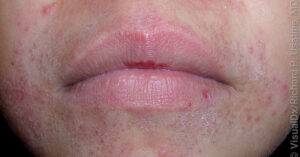Hives are one of the most common skin conditions. Most of us have had hives at some point or another. Hives are itchy, raised welts on the skin that can appear suddenly and often for no apparent reason. Though they’re usually not serious, hives can be very uncomfortable. In this blog post, we’ll take a closer look at hives: what they are, what causes them, and how to get rid of them.
What Are Hives?
Hives are basically swollen blood vessels in the skin that leak fluid. This can happen for several reasons, but most often it’s due to an allergic reaction. When something triggers your body’s allergic response, histamine is released into your bloodstream. This causes the blood vessels to open up and leak fluid, which leads to the formation of hives.
Hives can vary in size from a few millimeters to several centimeters. They can appear anywhere on the body, including the face, lips, tongue, throat, hands, feet, and genitals. Hives can be very itchy and uncomfortable, but they’re usually not painful. When they happen on the tongue, throat, or airways they can be very dangerous due to interfering with one’s breathing.
What Causes Hives?
There are many possible triggers for hives including food allergies (such as nuts or shellfish), medications (such as penicillin or aspirin), infections (such as a cold or the flu), insect bites or stings (from bees, mosquitoes, etc.), pet dander, pollen, and more. Sometimes stress or extreme temperature changes (being too hot or too cold) can trigger hives. If you have hives and you know what caused them, avoiding the trigger is the best way to prevent future episodes.
Hives usually go away on their own within a few hours to a few days. However, if you develop hives that last longer than six weeks, this is known as chronic urticaria, and you should see a doctor.
How to Treat Hives?
Treatment for hives usually involves over-the-counter antihistamines such as cetirizine (Zyrtec). Dermatologists and allergists are not a fan of diphenhydramine (Benadryl)- we will discuss this in another blog. Antihistamines can help reduce itching and swelling. If your hives are severe or they don’t respond to antihistamines, your doctor may prescribe a corticosteroid such as prednisone. You can also try some home remedies to help relieve symptoms such as applying a cool compress to the affected area or taking oatmeal baths.
If home treatment doesn’t work or your hives are accompanied by difficulty breathing or swallowing, please see a doctor right away as this could be a sign of a more serious allergic reaction known as anaphylaxis.
Conclusion
Hives are a common skin condition that manifests as raised welts that can be itchy and uncomfortable. There are many possible triggers for hives including allergies, infections, stress, temperature changes, and more. Treatment for hives usually involves over-the-counter antihistamines but if your hives are severe your doctor may prescribe a corticosteroid medication. Home remedies such as cool compresses and oatmeal baths can also help relieve symptoms. If you have hives that last longer than six weeks this is called chronic urticaria and may require referral to dermatologist or allergist for further testing and if you develop more serious symptoms like difficulty breathing or swallowing, please go to emergency room right away as this could be a sign of anaphylaxis—a potentially life-threatening condition.
To learn more, we invite you to call Children’s Dermatology at (949) 679-1990 or fill out our contact form to schedule a consultation today. During your visit, we will answer any questions you may have and help determine an accurate diagnosis and the best treatment options for your family.




